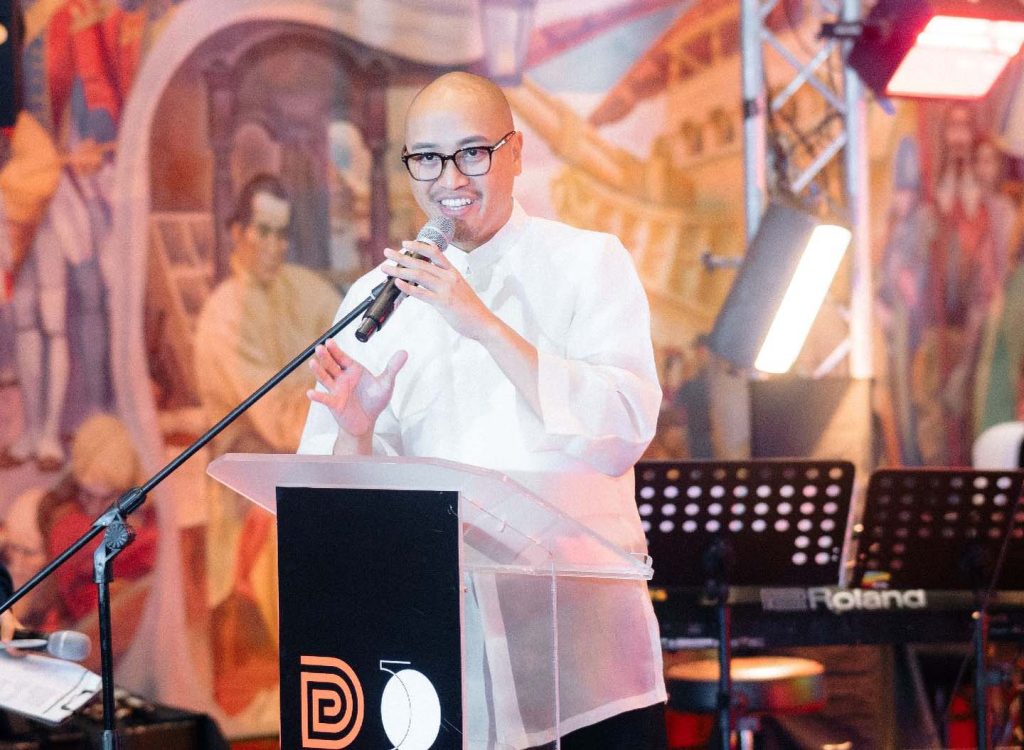MANILA, PHILIPPINES – Philippine creativity springs from an inherent resourcefulness, and it’s because of this quality that the possibilities for Philippine design are endless. Deputy Director-General for Museums for the National Museum Jorell M. Legaspi shared these thoughts in an exclusive interview with adobo Magazine at the launch of 50 Years of Philippine Design and Beyond, an exhibition organized by the Design Center of the Philippines. The launch was held on December 11, 2023, at the National Museum of Fine Arts.
The exhibit explores the evolution of Philippine design since the founding of the National Design Center, though as Jorell asserts, Filipino design existed long before those days.
“Here at the National Museum of the Philippines, we have the National Museum of Anthropology that has an astounding collection of prehistoric, colonial material culture that are actually testaments to the ingenuity of Filipinos in terms of craftsmanship,” he explained. “And a lot of these objects and ethnographic materials originated from innovation – and innovation comes from necessity,”



Filipino pre-colonial crafts like basket-weaving, for example, came about due to early Filipinos’ need to have vessels for food, building materials, and tools. Baskets were designed around utility and whatever materials were available; a certain amount of resourcefulness was needed in order to create items that improved their community’s everyday lives.
This, Jorell said, led to a design philosophy that remains intrinsic among Filipino creatives today: one that feels more open due to both the need for survival, and one that involves a sense of collaboration.
“It’s really about thinking about where design plays in the lives of Filipino people in everyday lives, and how design has really – as [exhibition curator] Marian Pastor Roces says – it wasn’t really much about the impact of design, but really just about how design kind of manifested in communities through collaborations through networks, through malasakit, through bayanihan,” he explained. “Philippine design is not just a result of one’s own individual talent or effort.”
“It’s really a collective effort. Makikita talaga natin yan sa mga creative industries natin sa Pilipinas,” he continued. “It really takes a village to manifest not just good design, but great design, useful design, meaningful design that can really be useful in terms of finding ways, how we can be more self-sufficient, resilient, and able to survive our day-to-day existence in the world.”
Adding to this is the Filipino’s natural resourcefulness, borne both from their pre-colonial culture and from their history as a developing nation. While resources may come in more limited supply compared to more developed countries, Filipino design has always been able to excel with whatever it can obtain.

“Not only are Filipinos hard-working, but Filipinos can find ways to find solutions to things,” Jorell said. “We are only limited by the resources that we have access to, but even with that, you can already do so much.”
“We can come up with design solutions – kaya nga tayo naging malikhain, diba, dahil may mga bagay-bagay tayong pinagdadaan sa pangaraw-araw nating mga pamumuhay in a way. Filipinos tend to make things a little bit more colorful, more maaliwalas because nandoon talaga yung design, kind of intrinsic na sa atin yung design philosophy na ganoon. So, for me, what really stands out is that Philippine creativity is limitless.”
And with the global design community beginning to embrace the same sensibilities that led to the development of Philippine design so long ago, Filipino creatives are poised to make a significant impact on the world stage with their limitless talent.


“In the global community, there’s a lot of focus now on Filipino creativity, pagdating sa fashion, furniture design, sa pagkain, even graphic design and music,” Jorell shared. “So we’re part of that global conversation about what it means to be creative, what it takes for design, to be useful, to be relatable, to be purposeful. And I’m glad that Filipinos are part of that whole movement.”
50 Years of Philippine Design and Beyond will be on exhibition at the National Museum of Fine Arts from December 12, 2023 to March 03, 2024.
adobo Magazine is an official media partner of the Design Center of the Philippines’ ’50 Years of Philippine Design and Beyond’ exhibit








